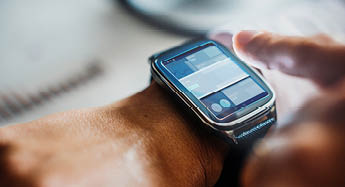CJEU rules on prescription support software as a medical device
March 2018
The Court of Justice of the European Union ("CJEU") delivered its judgment in Case C-329/16 Syndicat national de I'industrie de technologies médicales (SNITEM) and Philips France v Premier Minister and Ministre de Affairs sociales et de la Santé on 7 December 2017. It is the first time that the CJEU has ruled on the scope of the definition of 'medical device' in the Medical Devices Directive1 as it applies to standalone software.
Although software is expressly included in the definition of 'medical device'2 , the case arose in the context of French legislation that requires additional certification of certain software notwithstanding the fact that the relevant software was CE marked in accordance with the Medical Devices Directive. The software at issue was Philips France's prescription support tool called IntelliSpace Critical Care Anaesthesia, which provides physicians with certain information to allow them to prescribe drugs, particularly potential contraindications, interactions with other drugs and dose limits.
We reported on the Advocate General's Opinion in this case in October's edition of Synapse. To recap, the Advocate General recommended that the CJEU respond to the reference from France's Conseil d'État by confirming that prescription support software can be a medical device if it provides the physician information allowing them to detect contraindications, interactions between drugs and excessive dosages. It will not come as a surprise to many that the CJEU agreed with the Advocate General.
The CJEU said that it was expressly apparent from the definition of 'medical device' that software will be a medical device where it satisfies two cumulative conditions relating to the objective pursued and the resulting action.
Objective
The manufacturer must intend the device to be used for a medical purpose. Referring to Brain Products3 , the CJEU said that the EU legislature made clear that it was not sufficient that the device is used in the medical context, but it was also necessary that the intended purpose, defined by the manufacturer, is specially medical. In other words, it falls within one or more of the four 'medical purpose' limbs of the definition of 'medical device'.
Software that cross-references patient-specific data with drugs that a doctor is contemplating prescribing, and is able to provide the doctor in an automated manner, analysis intended to detect, possible contraindications, drug interactions and excessive dosages, is used for the purpose of prevention, monitoring, treatment or alleviation of a disease and therefore pursues a specifically medical objective. Consequently, it will be a medical device under the Medical Devices Directive.
Action
The CJEU confirmed that a medical device does not need to act directly in or on the human body – the device must not achieve its principal intended action in or on the human body by pharmacological, immunological or metabolic means. The essential point was the intended purpose of the device.
Implications
The CJEU has confirmed that the intended purpose of the manufacturer is the primary 'gate keeper' as to whether a product will be a medical device. However, with the increased use of decision support software in healthcare, the CJEU's judgment provides useful guidance in respect of such software. Additionally, as the definition of 'medical device' in the new Medical Devices Regulation4 (which applies from May 2020) is largely aligned with that in the Medical Devices Directive, the judgment will also be relevant to the new legislation.
In addition, with the incorporation of automated reasoning, it is likely that more decision support software will be considered as medical devices. However, this also raises a question of where the boundary of liability between the healthcare professional and the medical device manufacturer would lie.
Finally, following this decision of the CJEU, the Conseil d'Etat is likely to decide to cancel the provisions of the Decree dated 14 November 2014 regarding prescription support software which was challenged, obligating the Government to revise the Decree.
If you have any questions on this article or would like to propose a subject to be addressed by Synapse please contact us.
2 Article 1(2)(a) defines &quo;medical device&quo; means any instrument, apparatus, appliance, software, material or other article, whether used alone or in combination, including the software intended by its manufacturer to be used specifically for diagnostic and/or therapeutic purposes and necessary for its proper application, intended by the manufacturer to be used for human beings for the purpose of:
- diagnosis, prevention, monitoring, treatment or alleviation of disease,
- diagnosis, monitoring, treatment, alleviation of or compensation for an injury or handicap,
- investigation, replacement or modification of the anatomy or of a physiological process,
- control of conception,
and which does not achieve its principal intended action in or on the human body by pharmacological, immunological or metabolic means, but which may be assisted in its function by such means
3Case C-219/11 - Brain Products GmbH v BioSemi VOF and Others



Tasmina Goraya
Tasmina is a senior associate in the intellectual property department in our Cambridge office.
"Software will be a medical device where it satisfies two cumulative conditions relating to the objective pursued and the resulting action."
"With the increased use of decision support software in healthcare, the CJEU's judgment provides useful guidance in respect of such software."

